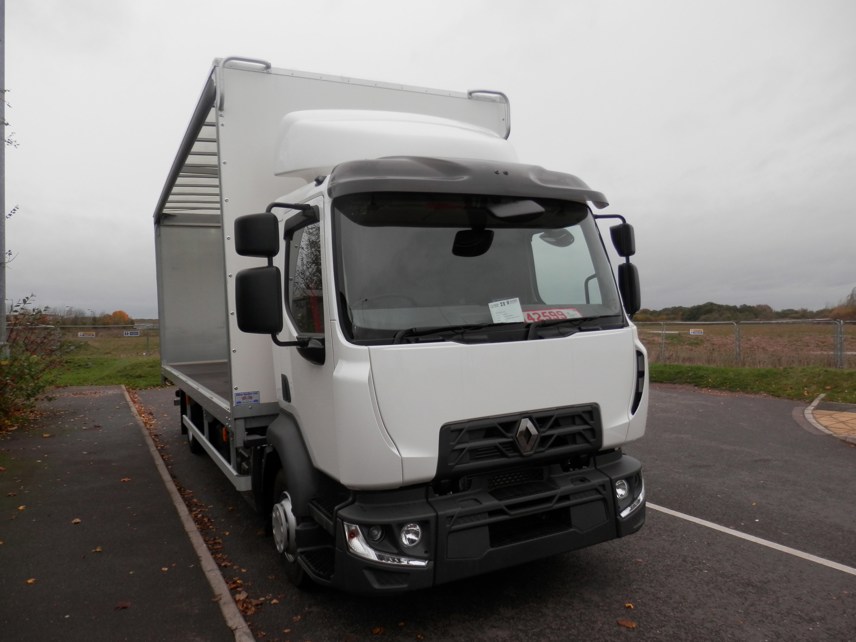Review
During the switch in emissions standards from Euro 5 to Euro 6, Renault Trucks amazingly decided to replace not just one model within its range but practically replace its whole line-up, from lightweight distribution, through the construction range to long distance tractors. At the same time they replaced model names with nomenclatures to reflect their mission: ‘C/K’ for construction, ‘T’ for tractor and, of course, ‘D’ for distribution.
The new distribution line-up from Renault Trucks encompasses many variants – in fact over 100 models – from the lightweight 4x2 rigid models covering up to 18 tonnes to the three-axle, 26-tonne gross vehicle weight in both 6x2 and 6x4 formats.
There’s even a lightweight tractor rated at 40 tonnes, gross combination weight, utilising the wider cab and higher power ratings of the six cylinder engine.
There’s quite a wide array of Euro 6 power ratings available across the range, starting with a four-cylinder 5.1-litre engine, billed by Renault Trucks as the most powerful four-cylinder on the market. It is rated at 210hp and 240hp, as well maximum torque levels of 590lb-ft and 663lb-ft respectively.
As the GVWs increase, the need for higher power is met by a six-cylinder, 7.7-litre with three power settings of 250hp. 280hp and 320hp, producing maximum torques of 700lb-ft, 800lb-ft and 885lb-ft, respectively.
All engines feature as standard the option of an exhaust brake or engine brake as well as electric and hydraulic retarders; the ‘standard’ exhaust brake is 80Kw on the five-cylinder and 120Kw on the six-cylinder. Perhaps it’s not surprising, with such a diverse engine line-up.
The gearbox options are just as varied: from five-, six- and nine-speed manuals, six-speed ZF-based automated ‘Optitronic’, to a 12-speed automated ‘Optidriver’ on the six-cylinder engine.
There are two cab widths, at 2.1m and 2.3m, and this is determined by the truck’s GVW, engine size and axle configuration, although both cabs still feature two-step entry with suspension provided by a combination of mechanical rubber pads and air at the top of the range.
Inside, there are a number of storage cupboards above the driver’s head, two storage compartments with net covers and smaller compartments around the dash area.
The door windows are electrically operated, as are the heated mirrors, although the three sun blinds on the windscreen are manual. The driver’s seat is air-suspended and features an armrest and integral seat belt. This is accompanied by a single passenger seat as part of the standard package.
Parabolic leaf springs on both front and rear, with telescopic shock absorbers, are the default specification. Our test vehicle had rear-air suspension, though, complete with a remote control by the side of the driver’s seat. The 17 wheelbases offer a wide range of potential body lengths, with the middle five-metre offering a maximum body length of 7.75m and a kerb weight of around 4500kgs, leaving around 7500kgs for payload on the 12 tonner.
The truck chassis braking system features as standard a ‘two independent circuits’ system with disc brakes all round and an electronic management of air production by APM (Air Product Management) Dryer cartridge.
A full range of electronic based supplementary braking is provided by the ABS, anti-slip regulation, electronic stability control, emergency brake assist and emergency brake lights all standard throughout the line-up.
Opening the cab door reveals two steps with the top one slightly more indented, relative to the lower, allowing easy access to the cab floor, which is an acceptable one metre from the ground. The air-suspended driver’s seat is typical distribution spec with a good level of adjustment, although the armrest is a little short to be comfortable.
Visibility is first class, which is a key requirement for a distribution truck, with a nice combination of all-round vision complemented by excellent rear-view vision provided by six mirrors. The only downside is the optional external sun visor, which in November didn’t see any sun and cast a slight shadow into the cab.
The dashboard is not so much a semi-wraparound type as a ‘quarter’, with just a slight indent into the cab environment. The central section houses the heating and ventilation rotatory controls, short handbrake lever, 12v accessory point as well as storage bins and cup-holder.
The instrument panel is different, if not unique, as it features a typically French feature – the LCD speed reader. In the centre is a large round rev counter complete with colour coded illuminated gradients to indicate the engine’s fuel economy zones. This is flanked on the left by three gauges for fuel, water temperature and DPF condition. Below these is radio and CD information. To the right is another LCD screen with various information, such as AdBlue and exhaust brake status with a large array of warning lights, sixteen in all to be exact.
Special thanks to the Renault Trucks dealer Allports in Lichfield for allowing us to test one of its vehicles.
Verdict
It has to be said, a 12-tonne distribution vehicle certainly has a rather niche market appeal, but that shouldn’t detract from buyer response to the product itself. Renault Trucks has a good all-rounder in the D Range, with a great mix of engines and automated gearboxes matched to a functional cab environment perfectly suited to the modern urban distribution market.
















